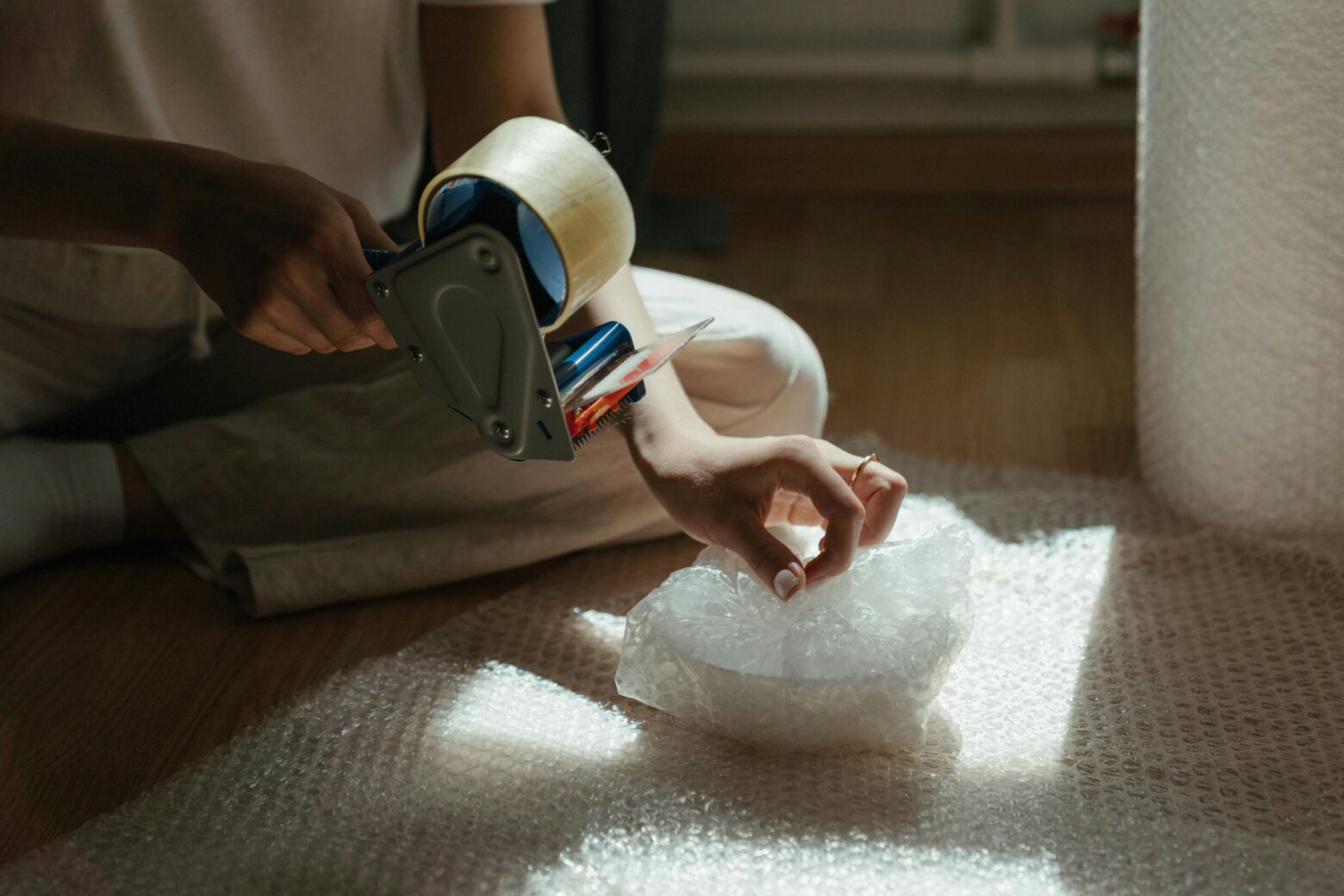Long-distance moving can be pricey, but if you plan and put in a little work, you can save a lot of money by packing your own things. Not only does packing by yourself save you money, but it also lets you decide how they are handled and put away. This complete guide will give you useful information and tips on how to pack yourself quickly and cheaply. We will also talk about the benefits of hiring professional movers, like Long Distance Movers, to make sure your move goes smoothly and without any problems.
The Pros of Packing Your Own Stuff
There are several benefits to packing your own things for a long-distance move. It does two things: it saves you money and makes it easier to unpack by letting you organize your things. Carefully packing your things will protect them and keep them safe during the trip.
Savings on costs
One of the best things about packing yourself is that you might be able to save money. While hiring professional packers can be pricey, packing your things yourself can save money on labor. You can put your budget toward other important moving costs if you buy packing supplies and do the work yourself.
Getting organized personally
When you pack by yourself, you have control over how everything is put together. Putting things into groups based on what they are used for or where they will go makes it easier to find them when you unpack. You may find this level of organization especially helpful if you have a lot of things or want to make sure that certain ones are easy to find when you get to your new home.
Peace of Mind
You can be sure that your things are safe and handled properly when you pack them yourself. It can give you peace of mind, especially if the things you are protecting are fragile or valuable. Extra care can be taken to wrap and secure fragile items so they get to your new home in the same condition they were left in.
An Overview of Important Packing Items
Gather all the things you will need before you start packing. Making sure you have the right tools on hand will speed up the process and protect your things better during the move.
Boxes and Containers
Get a range of boxes in different sizes so that you can fit different things inside them. Most things should be stored in sturdy cardboard boxes, but for things that need extra protection from water or bugs, you might want to use plastic bins. Many stores and online marketplaces offer free boxes, which can help you save money.
Wrapping and Protective Materials
Buy good packing supplies to keep your things safe. For protecting breakable things, you need bubble wrap, packing paper, and foam peanuts. You can save money on packing materials by using blankets and towels as extra padding. Make sure you have a lot of markers and packing tape on hand to label and seal your boxes.
Specialty Supplies
Of course, you might need special packing materials for some things. For example, wardrobe boxes make it easy to move clothes without getting wrinkled, and dish packs protect glasses and dishes even more. We recommend renting or buying these things if you have a lot of specific needs.
Tips for Effective Packing
Being organized, having the right tools, and being patient are all important for good packing. By using these tips, you can pack your things quickly and cheaply.
Declutter Before You Pack
Declutter your home before you start packing. Make a list of the things you no longer need or use and put them in different piles. Donate, sell, or throw away these things to cut down on the amount of stuff you have to move. It is easier to pack when you get rid of unnecessary things, and moving costs go down because fewer and lighter boxes mean less moving.
Pack Room by Room
Make sure you stay organized by packing one room at a time. Start in the basement, attic, or with things you only use during certain times of the year. Labeling each box with what is inside and which room it belongs in will make unpacking faster and easier.
Use the Right Methods for Packing
To keep your things safe during transit, you need to know how to pack them correctly. Put fragile things in strong boxes with lots of padding and wrap each one in bubble wrap or packing paper. For easier transport and to keep them from getting damaged, take apart furniture and other big things. Put heavy things in small boxes, like books, and light things, like bedding and clothes, in large boxes.
Make the Most of Space
Fill empty spaces in each box with smaller items or packing supplies to make the most of the space. This keeps things from moving around while they are being shipped and cuts down on the number of boxes that need to be used. Caution: If you over-pack boxes, they may become too heavy to move and may even get damaged.
How to Label and Keep Track of Your Inventory
Keeping track of the things you have packed is important for a smooth move. For easier unpacking, make sure your items are labeled and organized well. Making sure your things are easy to find and properly accounted for can be done by clearly labeling each box and keeping an inventory list.
Label Clearly
Label each box clearly with a bold marker. You should include a short description of what is inside and where it should go in your new home. In addition to helping you figure out what is in each box, this will also show the movers where to put them, which will make unpacking go much more smoothly.
- Descriptive Titles: Do not just write “kitchen” on a box. Write “kitchen—utensils and gadgets” or “kitchen—pots and pans” instead. With this much information, you can figure out which boxes you should unpack first.
- Color-Coded Labels: You could use labels with different colors for each room. For instance, green for the living room, and blue for the bedroom. With this visual system, it is easier to immediately sort boxes.
- Fragile Items: Put big, noticeable signs like “FRAGILE” or “HANDLE WITH CARE” on any boxes that have fragile items inside them. As a result, these boxes will get the care and attention they need during the move.
Create an Inventory List
Making an inventory list of your things will help you remember where they are and make sure nothing gets lost during the move. On your inventory list, give each box a number and write down This can help a lot if you need to make a moving insurance claim for lost or broken things.r moving insurance.
- Numbering System: Assign a unique number to each box. This number should correspond to an entry in your inventory list. In this case, Box 1 could say “Kitchen—pots and pans,” Box 2 could say “Bedroom—winter clothes,” and so on.
- Detailed Entries: Give a full list of what is in each box. This makes it easy to find things and keeps a good record for insurance purposes. A complete list will help you find things if they get lost or broken.
- Digital Copy: You might want to make a digital copy of your inventory list. This could be a simple spreadsheet or a moving app made just for that purpose. A digital list is easy to change and share with others, like the moving company or family.
- Backup Plan: During the move, always have a copy of your inventory list with you. If something goes wrong, you will be able to get the information you need right away.
Taking the time to properly label and list your things will make the whole moving process go more quickly and with less stress. That way, you will know exactly what is in each box and have peace of mind that everything is taken care of. This careful method works especially well for long-distance moves, where boxes are more likely to get lost.
Advantages of Hiring Professional Movers
Even though you can save money by packing your things, hiring professional movers can make your move go more smoothly and stress-free. If you want a complete moving solution, think about the benefits of hiring a reputable moving company.
Know-how and experience
Professional long distance movers have the skills and knowledge to make sure every part of your move goes smoothly. Their training in proper packing methods makes sure that your things are safe during transport. With their experience with long-distance moves, they can help you deal with problems and give you good advice to make your move go more smoothly.
Saving time
Hiring professional movers can help you save a lot of time and work. Packing and moving can be a time-consuming process, especially if you have a lot of belongings. Professional movers can pack, load, and unload your things, so you can focus on other, more important parts of your move.
A Wide Range of Services
A lot of professional movers offer a wide range of services that can make your move easier. This can include things like packing, loading, moving, unloading, and packing again. Additionally, some businesses provide extra services like storage and shipping vehicles. You can make your moving plan fit your needs and preferences if you hire a full-service moving company.
Liability and insurance
Professional movers usually offer insurance to protect your things while they are being moved. This gives you peace of mind because you know you are covered if something gets broken or lost. Talk to your moving company about insurance options and make sure you understand what they cover.
Don’t DIY Your Whole Move; Let Professional Movers Help You
Doing your own packing can save you money and be fun as you get ready for a long-distance move. By using these tips and tricks, you can keep your things safe and in order. But if you would rather have the help and convenience of professional movers, you might want to look into Long Distance Movers. Our team can make your move as easy and stress-free as possible by offering a full range of moving services, such as packing and insurance options. We can help you with your long-distance move. Contact us today to find out more.
Keep an eye for more news & updates on Internal Insider!










